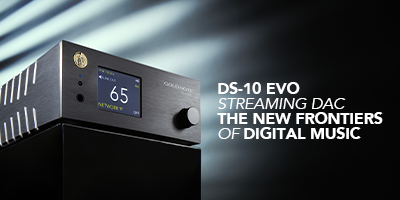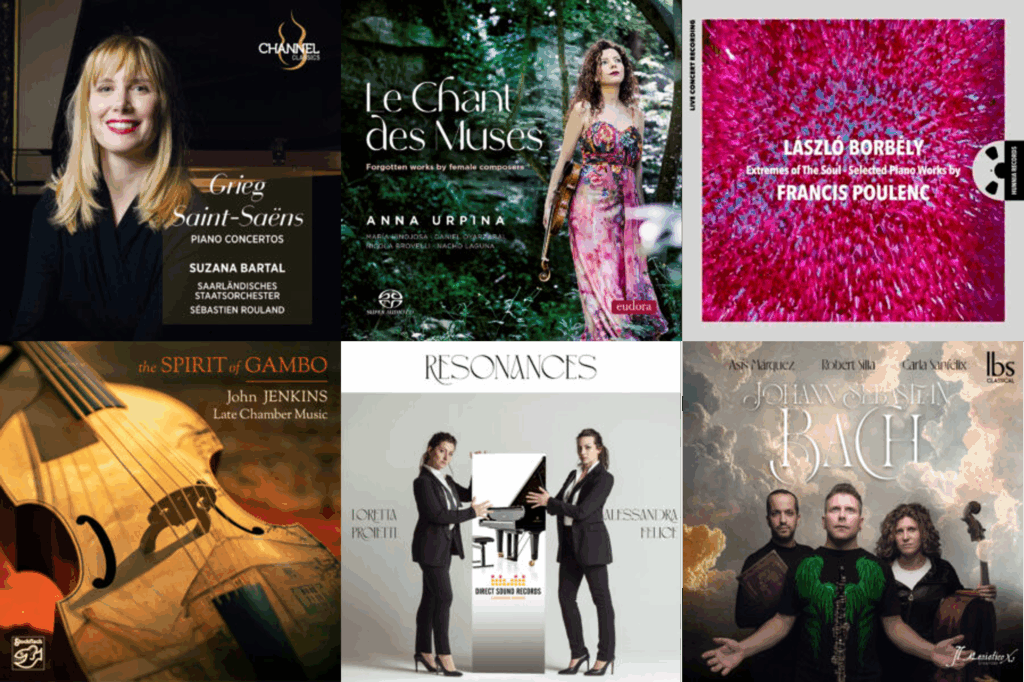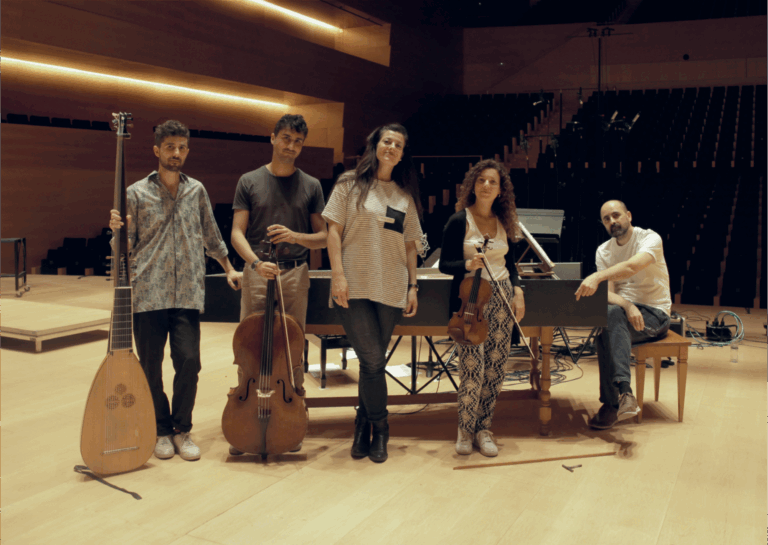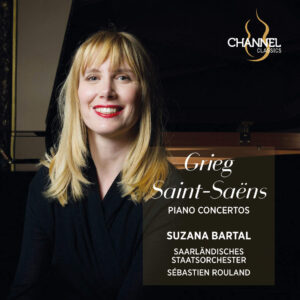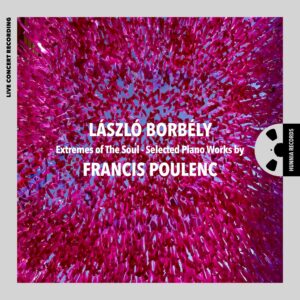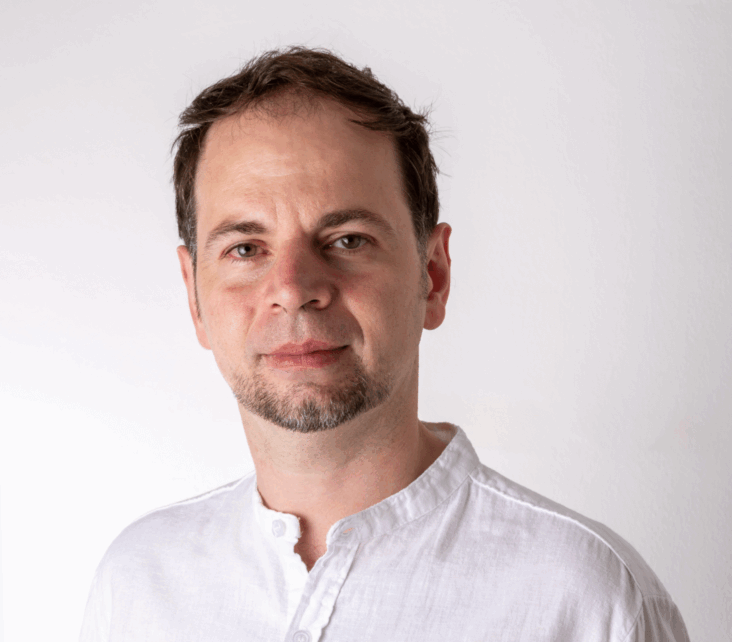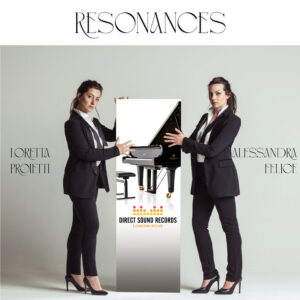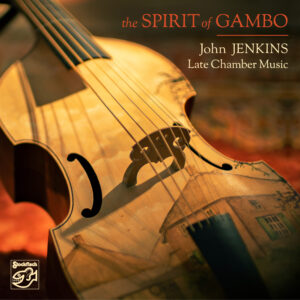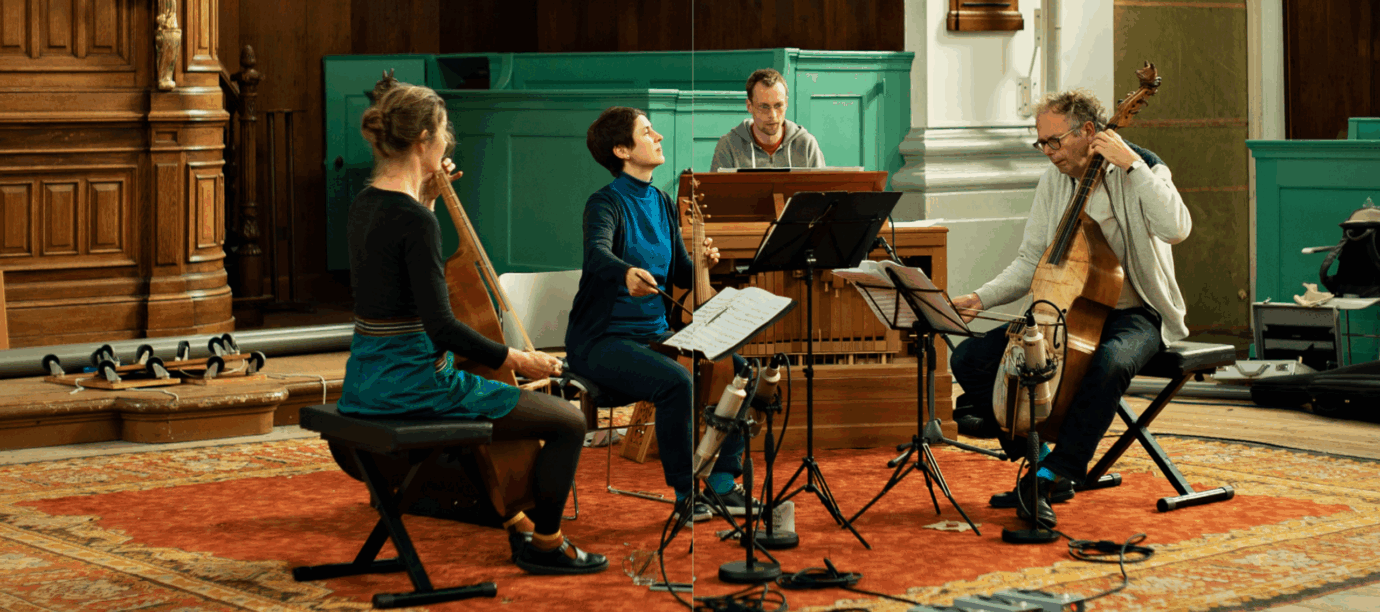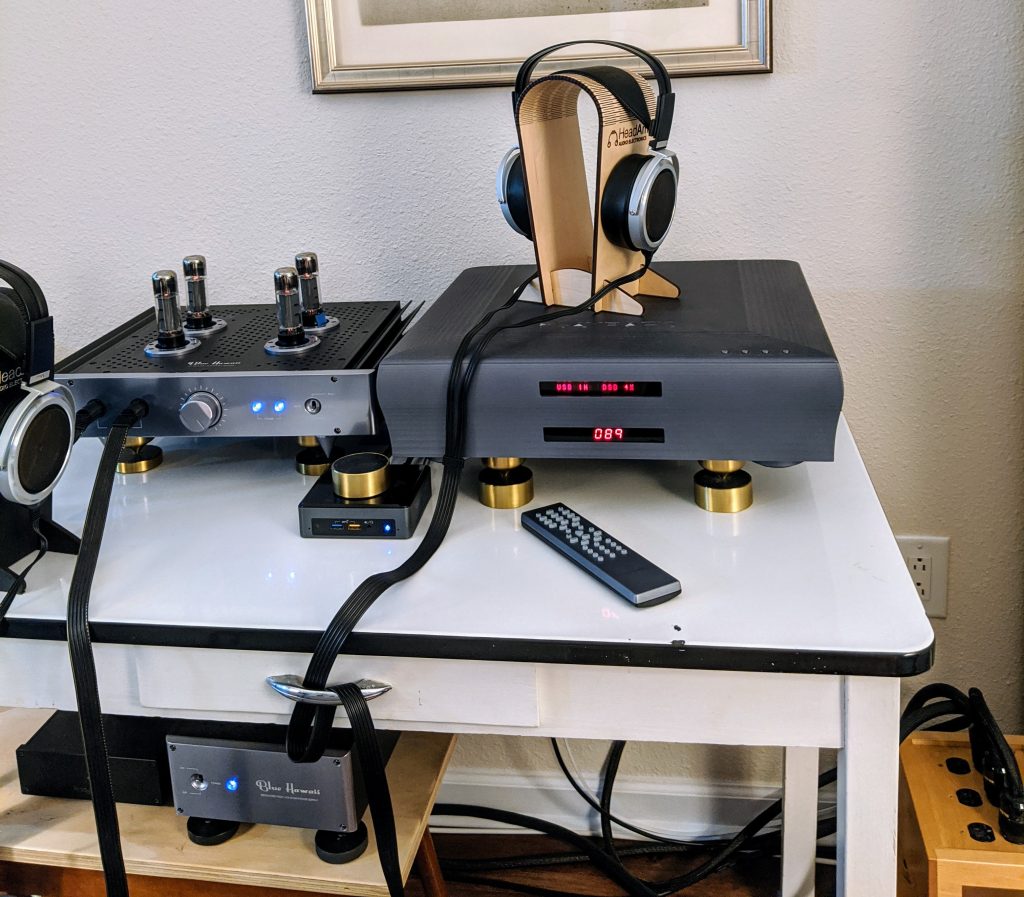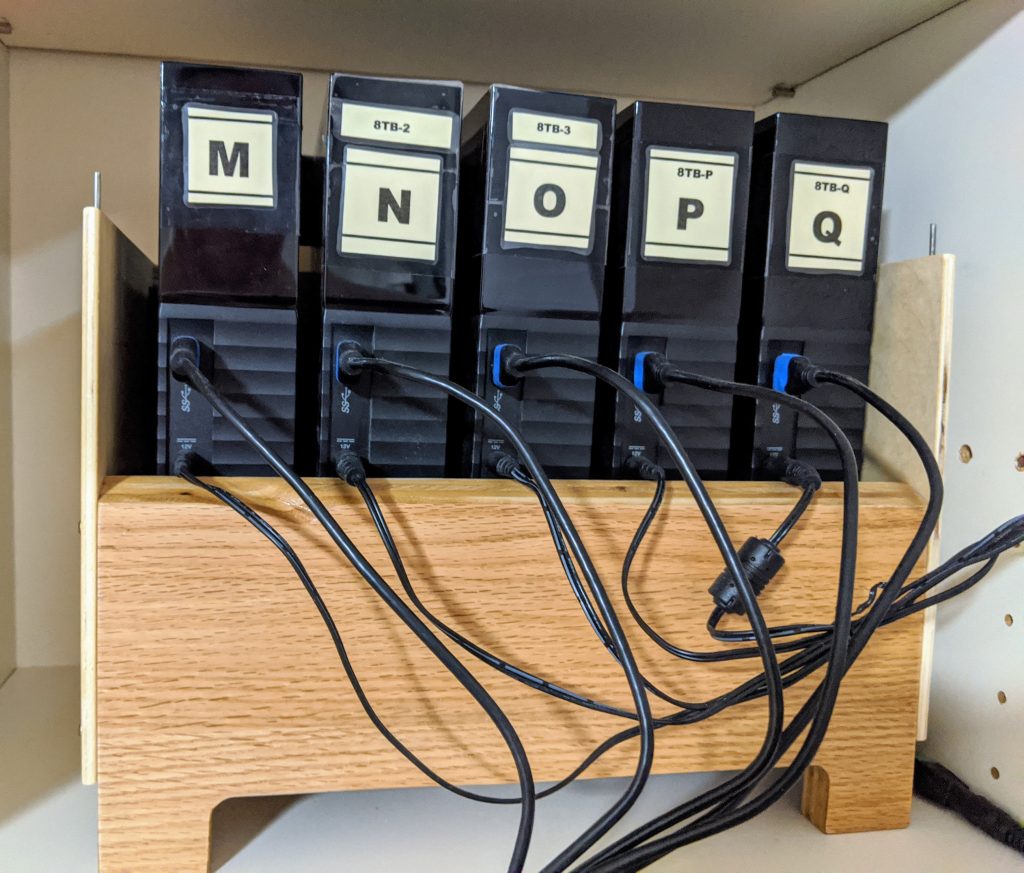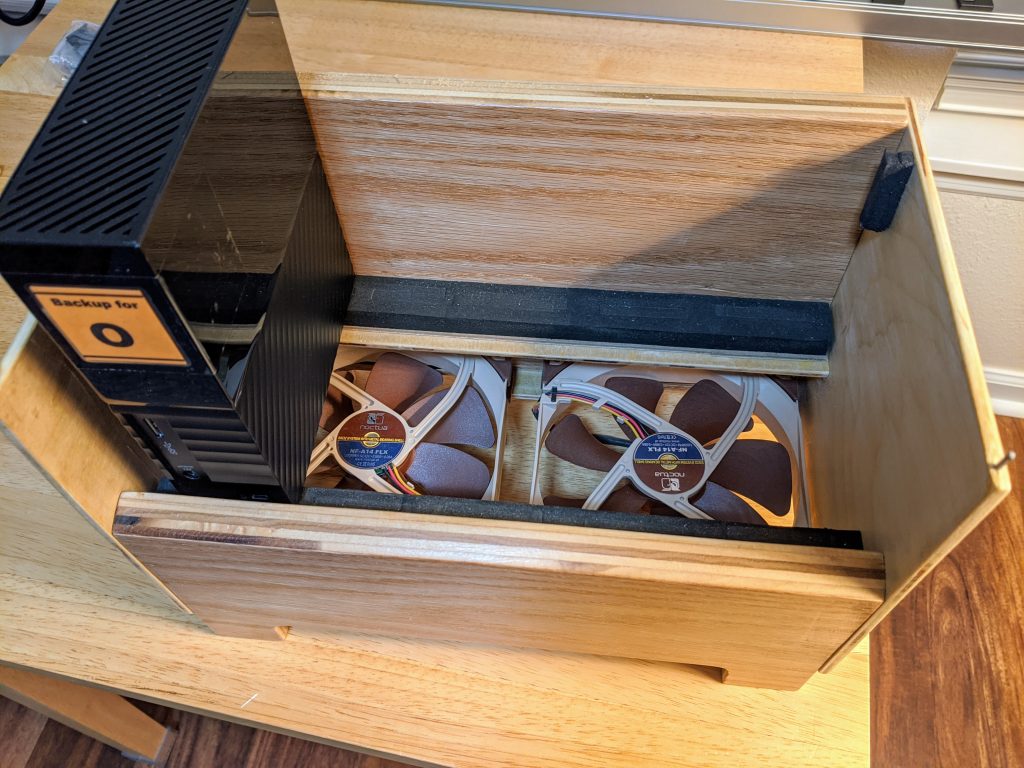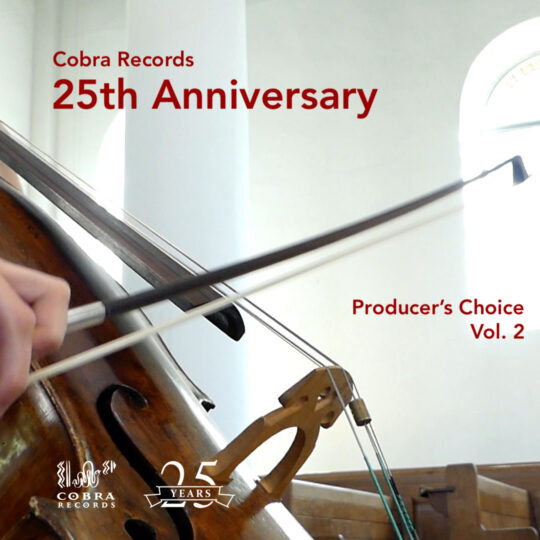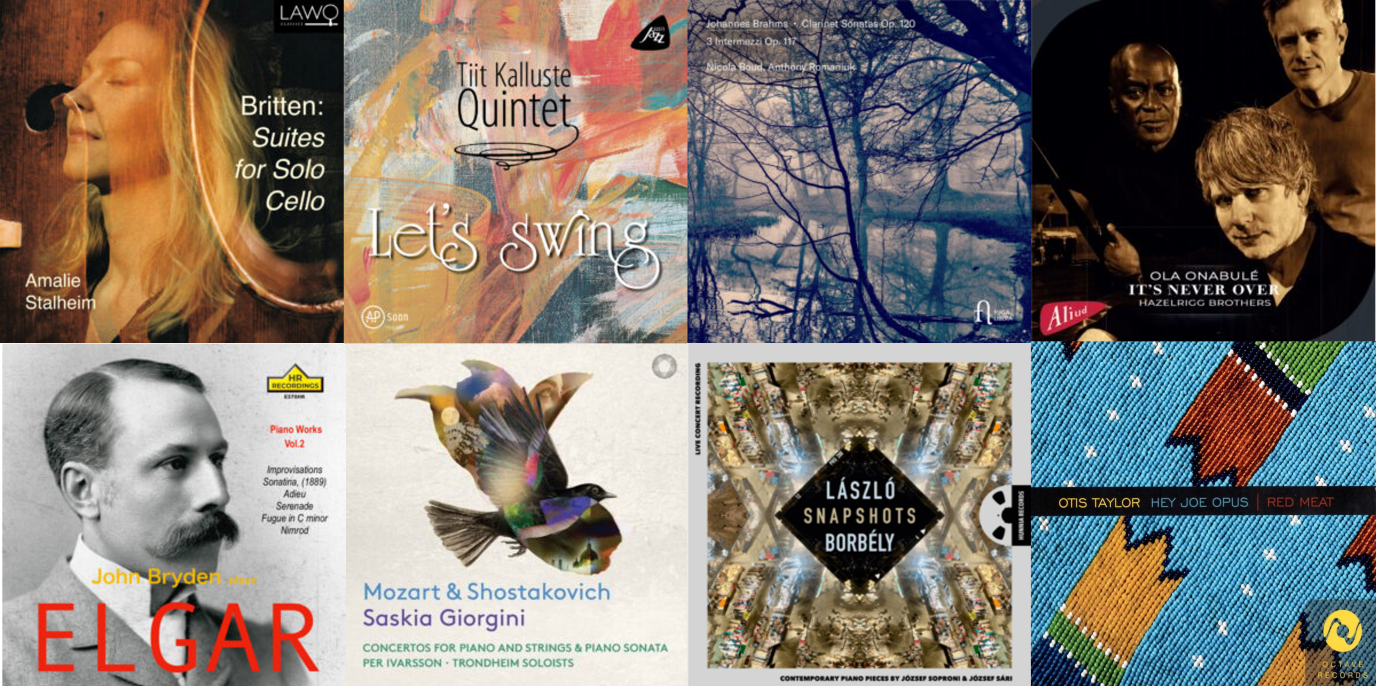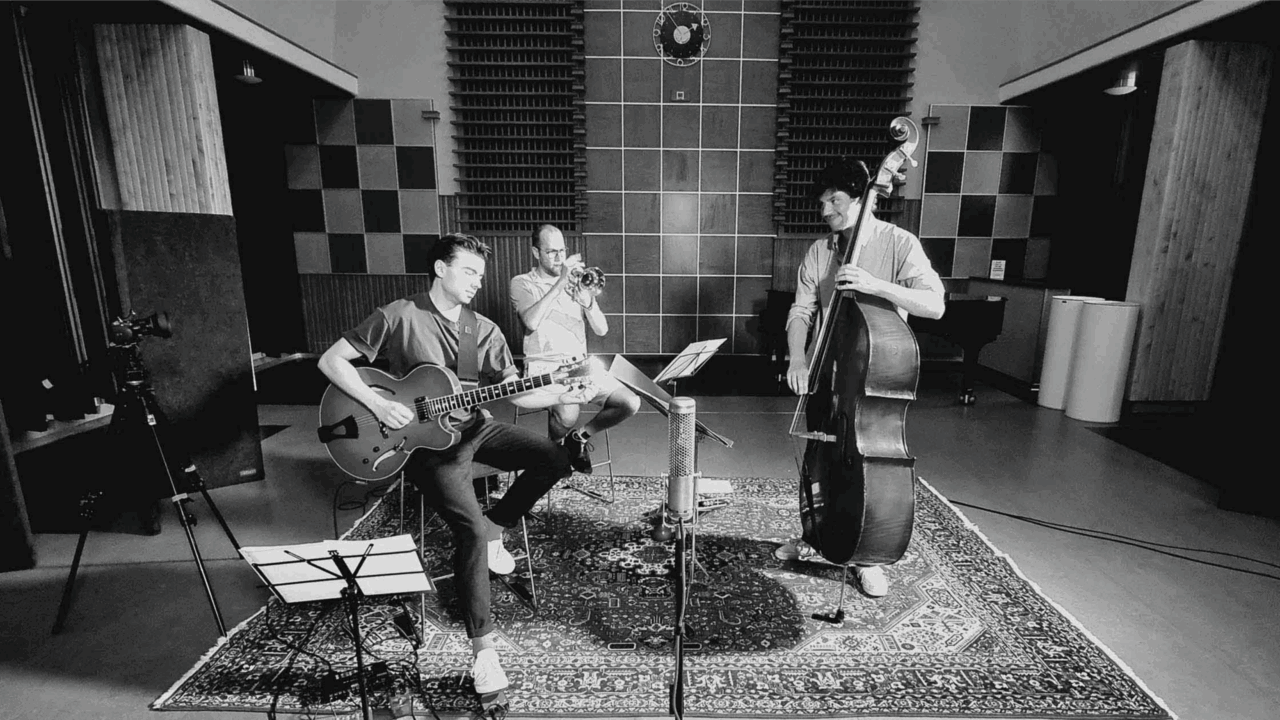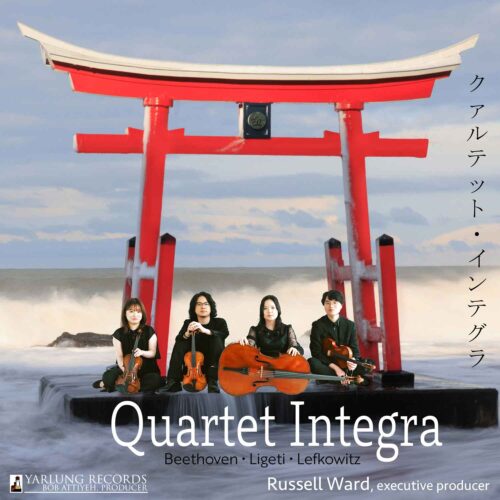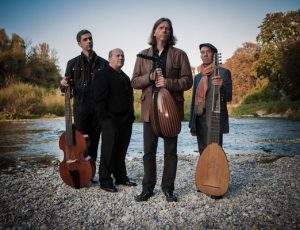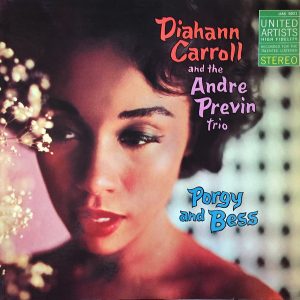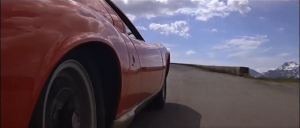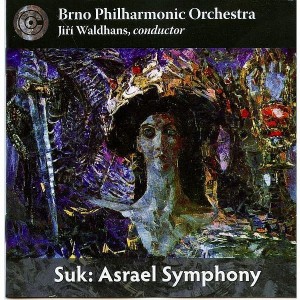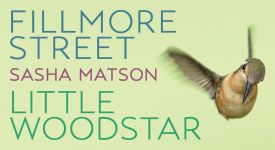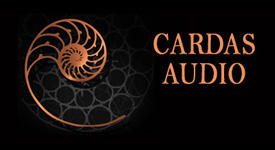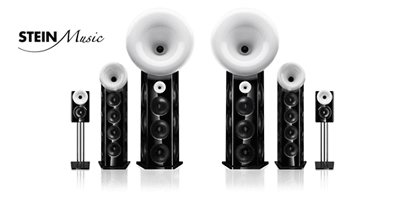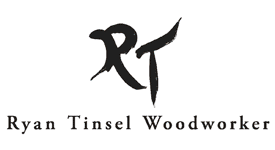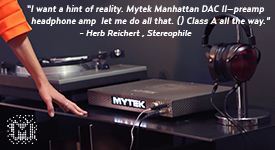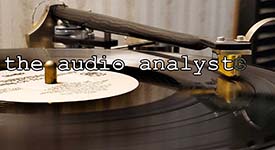I can't tell you about all the new releases from this past week now available at NativeDSD. I haven't had time to listen to them all, and certainly not yet time to write about them all. But I have selected six that truly piqued my interest, and they turned out to be just excellent releases musically and sonically. We have three that are Pure DSD, including a new release from Gonzalo Noqué at Eudora Records that is simply luscious, and an excellent recital of Poulenc's piano music by Laszlo Borbély and Hunnia Records. Then we have a new orchestral recording from Jared Sacks at Channel Classics, and it is a nice new rendition of two classics of the catalog. And a new label has appeared, Direct Sound Records, committed to purist recordings (in Pure DSD, of course). So read on. I hope you enjoy what you find below.
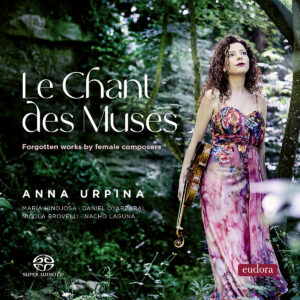
Le Chant des Muses—Forgotten Works by Female Composers, Anna Urpina, Daniel Oyarzabal, Maria Hinojosa, Nacho Laguna, Nicola Brovelli. Eudora Records 2025 (Pure DSD256, Stereo, MCh) Edit Master Sourced HERE
Interesting music, engagingly performed. The album is filled with over 60 minutes of music by women composers of the 16th, 17th, 18th, 20th, and 21st centuries. With music for various combinations of violin, cello, theorbo, harpsichord, piano, and voice, the album contains lots of variety. Several works have not previously been recorded, one is a 2024 commission by violinist Anna Urpina, so this is a recital of delightful discovery.
Of these composers, Anna Urpina has penned a brief poem of tribute that nicely captures the spirit and intent of this album:
In memory of those women
who dreamed in a whisper.
Ideas that never found paper,
melodies that died in the air,
words that never left the soul.
Silence that weighs heavy,
like a song unsung,
like a verse without echo.
Today, in their name,
we let their absence speak
and their art, still unseen, inspire us...
The works selected are the result of Anna Urpina's exhaustive work searching for manuscripts in library archives in Paris and Venice—focusing her attention on twelve female composers and seven works recorded here for the first time. A delight is her choice to bridge the earlier works with modern musical creations. If you play albums all the way through, as I do, you will appreciate the program this creates. It is a nice recital with changes in pace, style, and mood, as the performers morph from one piece into the next.
The consistent theme is the selection of lesser known (even unknown) works that are worthy of performance and of our time to hear. The compositions are not simply fluff pieces—far from it. They have a depth and intellectual challenge to them that intrigue the ear and cause one to pause and listen for what turn will next appear.
In many cases the composers were well known and highly respected in their lifetime, such as Francesca Caccini (1587 - c. 1641) who is reported to have received the highest fees of all musicians serving the Medici as the person responsible for composing and performing chamber music at their court during the first decade of the seventeenth century. But, as evidenced by the rather lamentable fact that seven of the works presented here are first recordings, their visibility to later generations faded into obscurity. So, such a wonderful gift this album provides to hear this engaging music once again.
The work by Helena Canovas Parés (b. 1994), Largo once again (2024) for violin, cello, and harpsichord, commissioned by Urpina, is a fine example of the humor (balanced with resolute equanimity) that pops up through the album. Starting with staid propriety and sounding perfectly suited to the 17th Century, after just a few bars Parés fractures the sound into atonal shards, then pulls it together, then fractures it once again. Ann and I loved it!
And the recording quality is top drawer. Gonzalo Noqué has created another "you are there" or "they are in your room" recording, all in Pure DSD256. Gonzalo's microphone technique is second to none. He consistently accomplishes the near perfect balance of direct and ambient sound, and captures a soundstage with solid imaging in breadth and depth. There are no 2-dimensional paper cutouts here. All is fully fleshed out 3-dimensional instruments with a solidity that only the best microphone selection and placement can achieve.
Moreover, as I've been saying for some time now, releases in Pure DSD256 consistently provide the most transparent, most true to the natural timbre of acoustic instruments, of any format. If your microphone selection and placement captures that natural timbre and the 3-dimensional soundstage, then the Pure DSD256 format holds it and reproduces it on playback. Pure DSD256 simply delivers the most "reach out and touch it" quality currently available for reproduced sound. So much is lost when mastered in PCM (DXD), as done with most commercial recordings.
You have, of course compared the free to download samples of the same DSD256 tracks mastered in the ubiquitous industry standard DXD(PCM) via Pyramix to those same tracks mastered entirely in the DSD domain with no PCM haven't you? Well, if not, hie thee hither and listen:
Get the Master Tape Listening Experience with Pure DSD256, Free Sample Downloads Included
Mixing in Pure DSD - No PCM Allowed
So, note to the wise, get the Pure DSD256 release available from NativeDSD, in either stereo of MCh, and hear how wonderful music recordings can sound when they are done to this level of accomplishment.
Session photo of the ensemble performing in this album.
Grieg & Saint-Saëns Piano Concertos, Suzana Bartal, Saarlandische Staatsorchestra, Sébastien Rouland conducting. Channel Classics 2025 (DXD 32-bit, Stereo, MCh) Edit Master Sourced HERE
Two warhorses of the catalog in refreshingly energetic and dramatic performances. The Grieg and Saint-Saens Piano Concertos my be well trod musical ground, but it is always a treat to hear them played in such lively, fresh, and dynamic readings as brought to us here by French-Hungarian pianist Suzana Bartal in collaboration with conductor Sébastien Rouland and the Saarlandische Staatsorchestra. If these don't bring you upright in your seat and enjoying every moment, I'm not sure what might serve you better.
Although not successful at its premiere with the composer at the piano, Camille Saint-Saëns’ Piano Concerto No. 2 in G minor went on to be beloved by the public. It is probably the most played of his five concertos for piano.
And, very few pieces of music are as iconic as the only concerto Edvard Grieg ever completed: his famous Piano Concerto in A minor.
The two together create a knock-out program for any audience, almost an overabundance of riches. So, if you're going to program these two works back-to-back, you'd better have some musicians with the chops to engage the audience all the way through. And here we do. I don't know Suzana Bartal, but I am delighted with this first introduction to her music-making. She combines rich, sonorous, sensuous lines, with the power and finesse to pull it off without getting mired in the mud. And she is further able to pull off the delicate light touches that are so necessary to bring contrast, and ultimately tension, to the music.
Bartal's performance of the Grieg is just a pure pleasure. And Sébastien Rouland delivers a partnership from the orchestra that just works supremely well. The orchestra's ensemble is spot on. Rouland's well judged dynamic shifts and changes of emphasis complement Bartal with both delicacy and brutal intensity—just what the Grieg requires. All of this suited me to a fare-thee-well. And, the combination of felicities make this my current favorite performance of this music, among many excellent alternatives.
The Saint-Saens Second Piano Concerto is similarly very well performed. Again, this is probably now my favorite performance of this work. But, it is not among my favorite pieces of music. There is much to like in Saint-Saens' composition, but overall it lacks, for me, the depth of insight that I better appreciate in other works as it vacillates between pure fluff and scrambling efforts at significance. Oh, I am so glad I am not a music critic! And I will gladly allow my betters to school me in why I should better appreciate this concerto. Nevertheless, Bartal and Rouland give this as good a performance as any I know. And the music certainly has a track record as a crowd pleaser.
The recording and mastering engineer for this release is the inestimable Jared Sacks, still at the helm and continuing to create masterpieces of recorded orchestral sound. Jared's sensibilities are second to none when it comes to capturing an orchestral performance in a completely natural sounding acoustic setting. The balance he achieves among the ranks of the players, and the integration of soloist into the fabric of the sound coming from the orchestra, are just superb. Nothing is ever spot-lit, but the resolution, detail, and utter clarity is just amazing. As is the breadth and depth of the soundstage he captures. With the piano soloist firmly grounded as an integral part of that soundstage, Jared's mastery in creating a sonic picture that allows for complete suspension of disbelief is unsurpassed. Bravo.
The original tracking channels are DSD256 but the they were mixed in DXD for release, so DXD 32-bit is the edit master. Accordingly, it is to that edit master iteration that I am listening for the best sound possible in my system.
As noted many times before, which format will sound better in your system will depend on how your DAC process the data stream. For some DACs, your system may sound best with the DSD256 derived from the edit master. What we find here is that on our main system with the Playback Designs MPD-8 DAC, the edit master file will consistently sound the best, the most transparent, in whatever resolution that exists. Thus, I am listening to the DXD 32-bit file which is the edit master in this case. But on Ann's office system with her Teac UD-501 DAC, the DSD256 iteration consistently sounds better, even though it is second generation. So, invest some time to listen and compare—determine with what format your system performs best.
Extremes of The Soul—Selected Piano Works by Francis Poulenc, László Borbély. Hunnia Records 2025 (Pure DSD256, Stereo) Edit Master Sourced HERE
Pianist László Borbély continues to delight me, both in his playing and in his selection of music to perform. Here he has chosen to explore works by Francis Poulenc, a composer whose quirky sensibilities and instant changes of mood have always intrigued me.
Borbély writes, "Poulenc's piano works, like his other works, have always captivated me, both with their unrelenting honesty and their fearless formal certainty. Poulenc is brilliant at taking his listeners from one emotion to another, often without any transition. Poulenc's language is often glibly described as 'light' even by the musical public. But this view is only correct to the extent that one can objectively observe his personal life from within the palpable proximity of danger. This 'predatory' gaze pervades the French composer's work. The unvarnished honesty of Poulenc’s music, which brilliantly blends tradition and progression, makes it astonishingly direct for all of us."
Astonishingly direct is a very apt description of Poulenc's music. For all of his quirkiness, his honesty and directness is completely captivating.
As usual with Borbély's releases, this recording is of a live performance with an audience. The recital, at just a bit under an hour is long for a live recording. It is a recital that Borbély has prepared with intention. The music he has selected tells a story that Borbély wishes to share—no less and no more. This is a gift we are offered that I am delighted to accept and treasure because both the music and the performance are sublime.
In my opinion, this is one of Borbély's best recordings. And he has released many excellent recordings, I assure you. But, this one is capturing a special place in my heart. The music is so unique, so completely "Poulenc," and it is played with with such insight, intelligence, and intention... It will be among the top recordings for my favorite releases this year. I'm just loving it. I encourage you to explore it.
Recorded at Hunnia's at ProVibe Park Studios, July 5, 2025, and performed on a Steinway Model D Concert Grand Piano, Hamburg, before a small audience of 18 lucky listeners. As has become standard for Hunnia recordings in recent years, the microphone tracks are captured in DSD256. The tracks are then converted to analog for mixing in a Studer 962 analog mixing console, the output of which goes directly to a Merging Technologies Hapi A/D converter to DSD256. So, this is a Pure DSD256-Analog Mixed release, with no PCM anywhere in the recording chain.
László Borbély
Resonances - 29 Works For Piano Four Hands, Alessandra Felice, Loretta Proietti. Direct Sound Records 2025 (Pure DSD128, Stereo) Edit Master Sourced HERE
Direct Sound Records is a label new to me. Founded by recording engineer Michaelangelo Canonico, the goal of this label is record and release music in as pure a way as possible. He writes in the enclosed booklet:
"When I created Direct Sound Records, I followed a clear vision: to record music as it truly lives—in space, in time, in air. I wanted to honour the atmosphere around the performance, not just the performance itself. We don’t isolate sounds; we reveal them. In real acoustic spaces. No studio tricks—only presence, silence, and the natural beauty of the moment. This label exists to offer you not just music, but a door into the atmosphere in which it was played.
"I believe music should be experienced, not processed. That space is not a backdrop—it’s an instrument. We trust the ear. We trust the moment. What we record is not just sound—it is presence. This is how we listen."
And this is an philosophy about recording music that I love and will fully endorse!
This recording is a fun romp through some very entertaining music for piano four hands. Starting with five pieces from Ravel's Ma mère l’Oye and then moving to sixteen short waltzes by Brahms and then the ever lovely Petite Suite by Debussy, the pianists conclude with shorter pieces by Poulenc (always a delight) and Rachmaninoff.
Apparently recording in a smallish space a smaller instrument than a full concert grand, the sound is very direct, very open, very dynamic. Canonico writes, "This recording in native DSD128 was not shaped in post-production. It was shaped in the moment—by microphone placement, room interaction, and pure signal integrity. Every choice in the signal chain was made to honour transparency, the original dynamic, phase coherence, and the full expression of acoustic space."
And I enjoyed the directness and clarity of the recording immensely. One is immediately aware that this is a recording made by a purist, a recording engineer who seeks to capture the live sound of the actual acoustic instruments as heard in a natural acoustic space. Love it! My only caveats are:
1) The sound is a bit "hard" and brittle. Is this the true sound of the piano, or perhaps the sound of the Tascam A/D converter? Dunno, but my bet is on this being the true sound of the piano. I doubt it is the sound of the lovely AEA R88 MkII Ribbon microphones Canonico lists as being in use given my familiarity with their sound in other recordings.
2) I would love to see Canonico step up from the Tascam DA-3000 D/A converter used for this recording to a Merging Hapi or, even better, a Playback Designs A/D converter to allow for recording in Pure DSD256 rather than DSD128. Looking at his website, I see a Merging Hapi A/D converter listed, so perhaps we will get to hear a next release using it.
I look forward to hearing more from this label, and I recommend this release for anyone who enjoys piano for four hands playing delightfully engaging works filled with sun and joy. My respect to the Metis Piano Duo, Alessandra Felice and Loretta Proietti.
Later... I emailed Michaelangelo Canonico to let him know that this review had been posted. He replied with some additional information, which I post below with his permission:
"...Your words captured the spirit of what I aim to do, respect the honesty of performance and the living nature of acoustic space.
"You were absolutely right in your intuition about the piano. The Yamaha CFIII used for this recording has a naturally vibrant and somewhat aggressive upper register, especially in the intimate room where it was captured. Rather than soften or tame its character in post-production, I chose to preserve its raw realism, and the instrument as it truly was in that moment, in that space. I believe that truth in sound includes its imperfections, and I’m glad you noticed the intention behind that choice.
"Regarding the converters, your comment is also spot on. When recording abroad or on location, there are occasionally logistical constraints, and the Tascam DA-3000 has been a reliable field companion for pure signal integrity. That said, I’m happy to share that future releases are being captured using the Merging Hapi in native DSD256, and I look forward to pushing transparency and spatial realism even further."
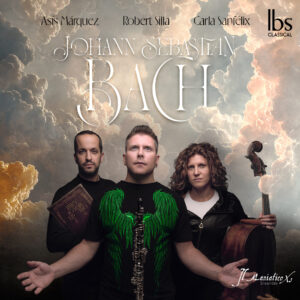
Bach Trio Sonatas, Il Maniatico Ensemble. IBS Classical 2025 (96k, Stereo) HERE
Il Maniatico Ensemble has arranged Johann Sebastian Bach's six sonatas BWV 525 to 530, originally intended for organ, by adapting them to an ensemble consisting of oboe, keyboard (harpsichord or organ), and cello. The arrangements work beautifully and bring out Bach's music with fidelity and superb musicianship. They play with excellent ensemble, and a degree of panache that is most welcome.
Here we have lively, intelligent performances that are filled with nuance and a great deal of pure pluck. These are performances that bring forth the joy of Bach's music.
Il Maniatico Ensemble is a flexible interdisciplinary group of musicians led by oboist and conductor Robert Silla. For performance, various members will assemble as needed by the music to be performed. In this album, Silla performs on oboe and is joined by Carla Sanfelix, cello, and Asis Marquez, harpsichord and organ. This is quite an accomplished ensemble, about whom I think it is worth sharing a bit of background:
Robert Silla (Valencia 1982), principal oboe in the Spanish National Orchestra, professor at Musical Arts Madrid, music researcher, artistic director of il Maniatico Ensemble, artist of the Marigaux brand of oboes and artist of the IBS Classical label.
Baroque cellist Carla Sanfelix is founding member of the historical ensemble L’Apothéose, member of the Spanish National Orchestra, and winner of twelve national and international awards, including Friends of York Early Music Festival Competition (United Kingdom).
Harpsichordist and organist Asís Márquez was born in Madrid and earned his advanced degree cum laude in harpsichord and basso continuo with Alberto Martínez Molina at the Royal Conservatory of Music of Madrid. In 2013, he earned his Master’s degree in harpsichord and basso continuo from the Conservatorium van Amsterdam, where he studied with Richard Egarr.
There is another album released by Il Mantiatico Ensemble on IBS which I've not yet heard but am eager to do so if I can lay my hands on it: a world premier recording of the complete Oboe Sextets of Cayetano Brunetti. Given the excellence of this current recording of these arrangements of the Bach Trio Sonatas, I have high expectations.
And, given the excellence of this recording, I offer to you my highest recommendation to seek it out. I think you will be pleased your listening experience. For me, it was a complete joy.
John Jenkins Late Chamber Music, The Spirit of Gambo. Stockfisch Records 2019 2025 (88.2k, Stereo) Edit Master Sourced HERE
John Jenkins (1592–1678), one of the most prolific composers of 17th century England, wrote during that transitional period from late-Renaissance to Baroque. And his works illustrate how interesting was the musical development during this period. Early works are the polyphonic fantasias for four-, five-, and six-part viol consort. But these are his later works, written during the tumultuous period of the Civil War that broke out in 1642 and Charles and his court had to flee London.
With the court fled, Jenkins no longer had employment in the Capital and he abandoned for shelter with families sympathetic to the Royalist cause in the countryside. Since these families were Royalists, they needed to keep their heads low in order to avoid the worst reprisals and so in their "lockdown" circumstances they opted for the consolation of making music indoors.
These chamber music works written during this period reflect the gift he strove to return to those sheltering him. They have a lyrical, balanced and reassuring character, lending, no doubt, a soothing effect on both players and listeners.
Freek Borstlap, one of the leading Dutch performers on the viola da gamba, is artistic director of The Spirit of Gambo and performs all around the world as a viola da gamba soloist. Playing bass or treble viol, he is joined by Irene Klein, treble viol, Ivanka Neeleman, bass viol, and Jörn Boysen, organ, in this recording made in Mennonite church Doopsgezinde Kerk, Haarlem, Netherlands.
Recording engineer Günter Pauler writes an entertaining segment at the Stockfische website (HERE) about the challenges of working in this ancient building where they'd already recorded four previous albums with The Spirit of Gambo. He writes:
"The sanctuary of the church is astonishing with its unprecedented acoustic qualities. All variations of miking are possible here without acquiring problematic room responses. Stockfisch has already been there for four recordings with The Spirit Of Gambo, and we are not the only sound professionals who are thrilled by its extraordinary ambience.
"The only drawback is (was) the electrical wiring. Like in almost all churches (not only in the Netherlands), they wanted to hide the electric lines as inconspicuously as possible. Instead of installing thick surface-mounted lines, they scratched the grout in the wall joints just deep enough to embed cables with the thickness of bell-wire. This resulted in voltage and current losses. For our third recording in 2011, we had to import power from a neighboring house because additional RF interference and amateur radios caused audible disturbances. For this new recording we had taken precautions, although in the meantime a central power line was installed in the church, which was of a typical, mediocre quality."
And he goes on to explain how he resolved these challenges for clean power and then discusses his choice of microphones and placement to accomplish this very beautiful recording. I recommend you pursue the link I provided above to read his explanation.
This is one of the nicest chamber recordings in my library, with a superb balance of direct and reflected sound, a lovely natural acoustic, and excellent capture of detail and the true timbre of these instruments. Just very nicely done!
Recording session, The Spirit of Gambo, Doopsgezinde Kerk, Haarlem, Netherlands, March, 2019.
All photos courtesy of the respective labels.

